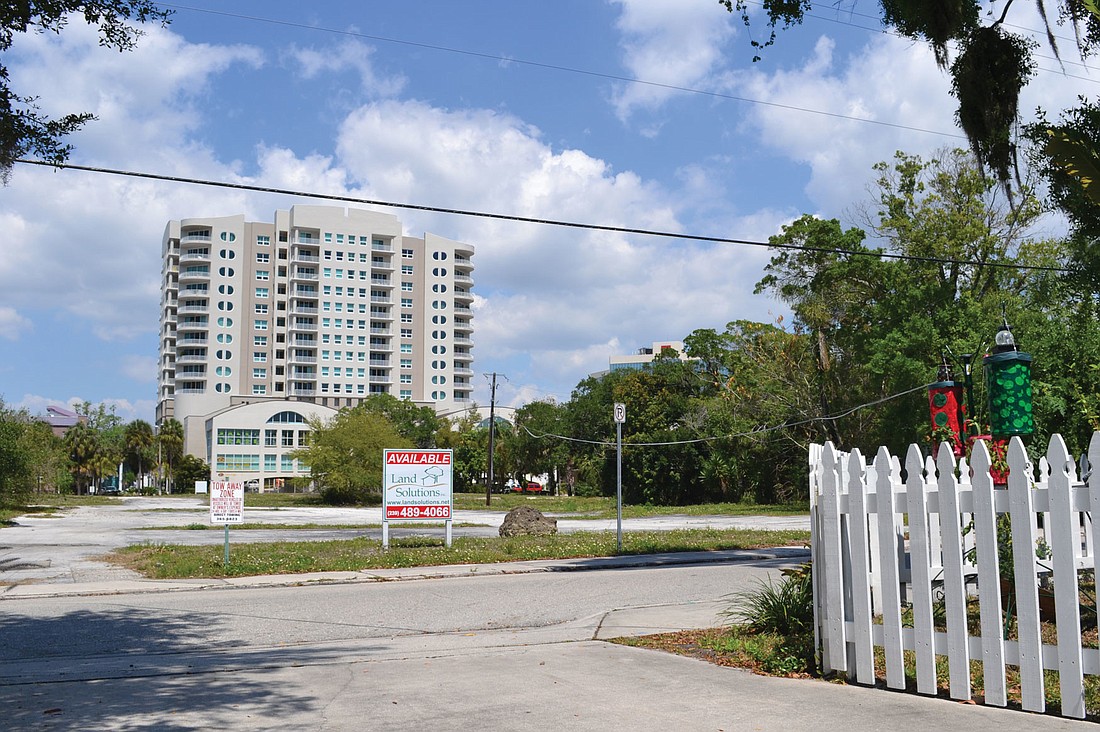- November 25, 2024
-
-
Loading

Loading

Laurel Park residents are still divided about a controversial buffer zone that would change the development process for projects planned within 100 feet of the downtown neighborhood.
But, after hearing from both proponents and opponents, city commissioners voted unanimously Monday Jan. 8, in favor of a sending a draft of the buffer zone to the Sarasota Planning Board. The planning board will vote on the buffer-zone proposal as a zoning text amendment after city planners put the finishing touches on the draft.
Proponents say residents should have input on larger projects that will change their neighborhood. They also want the city to change the appeal process so that it is easier to file an appeal of a development proposed in the buffer zone bordering Laurel Park.
Kate Lowman, president of the Laurel Park Neighborhood Association, said the buffer would give residents “a voice on big projects” built on the border of Laurel Park.
Some neighbors, however, say the changes would contradict the city’s long-planned Downtown Master Plan and deter future development.
Michael Saunders, of Michael Saunders & Co., who owns property on Orange Avenue abutting Laurel Park, and other developers say the buffer zone would give unfair and unique power to one neighborhood in the city.
Longtime Laurel Park resident and downtown activist Diana Hamilton said she was surprised by the outcome Monday. Hamilton said the buffer proposal — if approved — would lead to legal action by developers and property owners.
“It is going to be lawsuit hell,” Hamilton said after the vote.
Several variations of the buffer zone have been proposed. The latest version would change the development process for projects near Laurel Park in two major ways. It would require developers to hold two public community workshops if they apply for a building permit. Currently, city staff reviews and approves developments that meet the zoning code in the Downtown Edge area surrounding Laurel Park — without a public hearing. The first meeting would be held before the developer files plan, and the second workshop would be held after the developer has detailed plans for the project.
The buffer would also make it easier for residents to appeal nearby developments the city approves. It would widen the pool of residents who are allowed to file an appeal.
Hamilton thinks the community workshops are a good idea, but the buffer proposal’s changes to the way appeals are filed is a drastic shift.
Said Hamilton: “My concern here is we have morphed a little over the line. From ‘we want to have our say’ to ‘we want our way.’”
Advocates of the proposal, however, said they were pleased that a buffer zone they have been lobbying for since 2011 is finally moving ahead.
“The time has come,” Lowman said. “We have appeared (before the City Commission) multiple times.” “We are not anti-development,” longtime Laurel Park resident Jolie McInnis said to commissioners. “What we want is to have thoughtful projects that add to everyone’s quality of life.
Opponents of the proposal say it would be a major change to development guidelines that took years to put into place.
Like residents, city commissioners were also divided on the buffer zone, but they ultimately decided to move it on to the next step.
Commissioner Paul Caragiulo said he thought having public developer-held neighborhood workshops was a good idea. But the commissioner said he was concerned that the aspect of the buffer proposal that would make it easier for residents to appeal a site plan undermines the city’s current appeal process.